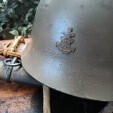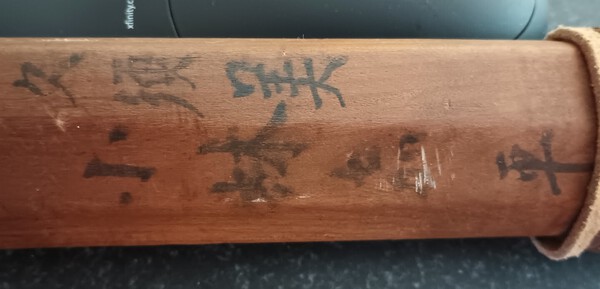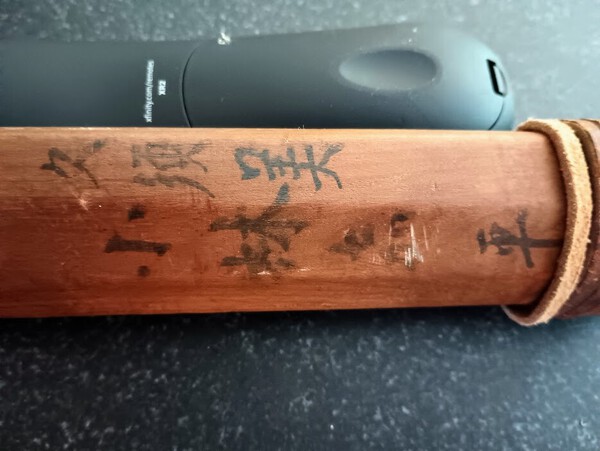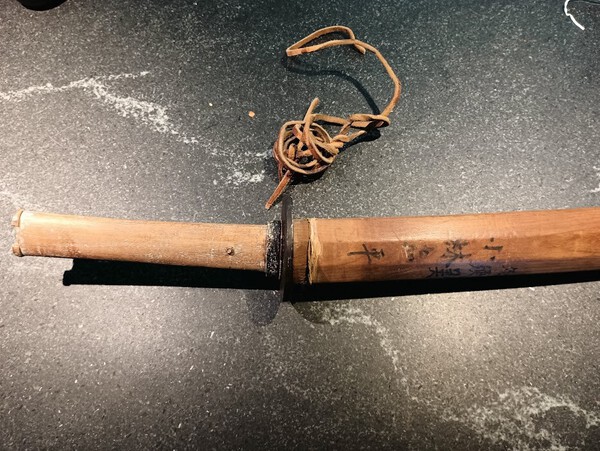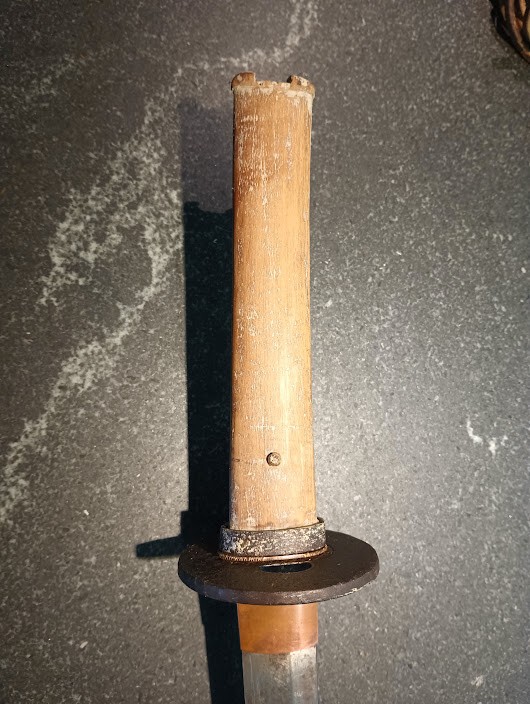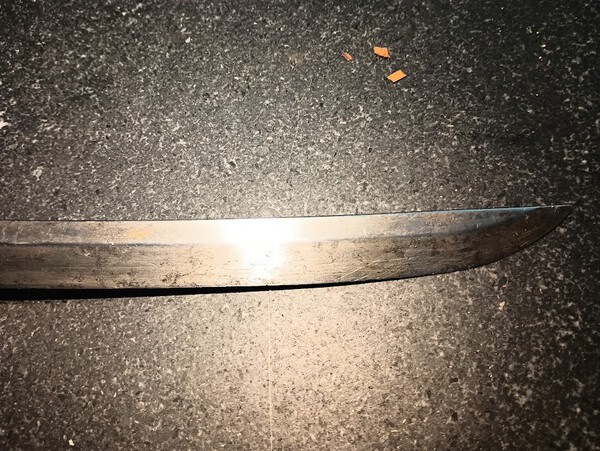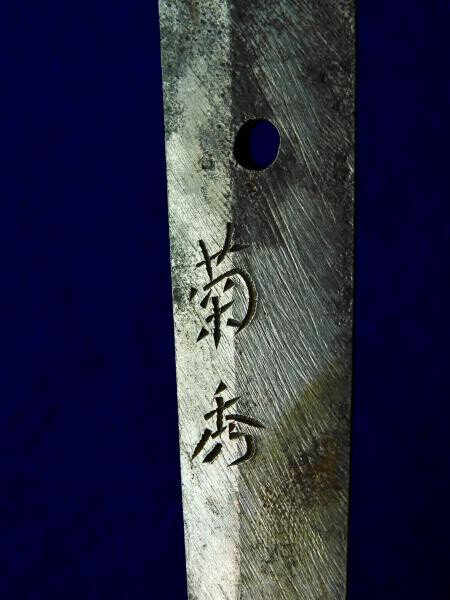-
Posts
4,181 -
Joined
-
Last visited
-
Days Won
93
Content Type
Profiles
Forums
Events
Store
Downloads
Gallery
Status Replies posted by SteveM
-
What can you tell me about this sword. Apparently there are no markings on the blade other than
'Sayagaki' which is on the scabbard. The photos show the shape the sword was in when I purchased it. The grip was wrapped w/white bandage tape as well as parts of the scabbard. I did the best I could to remove the tape and glue w/minimal amount of rubbing on the markings. They were not covered w/tape. The ring around the blade and wood was sanded to remove the glue and destroyed whatever beauty was left. Sword and canteen [photo #3] are part of the Army Vet bring-back.
-

Sorry Victor, there is nothing in those photos that would give me a good idea of when/where the sword came from. If its 20", its wakizashi size. Could be a sword that was made before the war, but its tough to tell in its current state of polish. Well, my guess would be that its an older sword, judging from the furnishing, but its just a wild guess. The army didn't issue soldiers with swords containing those kinds of furnishings (the round hand guard, and the seppa spacers). But those could be items that were assembled after the war to give your sword the appearance of being old.
Anyway, you would need to get it polished, or get a window opened up (where the trained polisher just polishes one spot) to see if its anything worth saving. I think even then it will be tough to justify the cost and hassle of doing this. It would probably cost you $2k to polish it and bring it back to health, and at the end of the day it still might not be worth $2k, even after it is polished.
I would say to enjoy it as is (an interesting artifact from WW2), and keep it safe. There are care and handling instructions in the FAQ which is linked in one of the links at the top of the forum page. Don't be tempted to polish the sword yourself, as it takes a trained expert to polish a Japanese sword. And youtube is full of people who destroy Japanese swords by grinding them or sanding them, hoping to make them shiny.
-
-
What can you tell me about this sword. Apparently there are no markings on the blade other than
'Sayagaki' which is on the scabbard. The photos show the shape the sword was in when I purchased it. The grip was wrapped w/white bandage tape as well as parts of the scabbard. I did the best I could to remove the tape and glue w/minimal amount of rubbing on the markings. They were not covered w/tape. The ring around the blade and wood was sanded to remove the glue and destroyed whatever beauty was left. Sword and canteen [photo #3] are part of the Army Vet bring-back.
-

Hello Victor,
I don't think any of us can't tell you much about the sword. We'd need to see better pictures of it, and also a picture of the tang. Normally Japanese swords are made so that the handle/pommel can be easily removed by taking out the bamboo peg that secures the handle to the tang.
The writing on the scabbard says
久須美 = Kusumi. Presumably a location in Saitama Prefecture, although it can also be a family name. I am guessing in this case it is the location of where the owner lived.
小林嘉平 = KOBAYASHI Kahei. Presumably the name of the owner.
-
-
Hello Steve,
May I come back to the Omori translation you gave me a few days ago with the simplified Mori kanji...(for which I again thank you very much)
I found on internet some tsuba by Omori Terumitsu but all with the normal kanji for Mori...so my question is have you any idea why he used sometimes a simplified kanji?
it could be interesting to know?
Thanks in advance
Daniel
-

Hello Daniel, I'm sorry to say I don't know why he used that variant on your item. I don't think there would be any deep significance - just a different style. It's kind of a rare variant. Maybe someone in the artist's circle (a teacher or mentor) also used it, or taught him the variant. Sorry I don't have any definitive information on this.
-
-
-

Oh, sorry, I didn't see that second photo. The date is
昭和十八年十月
1943, October
-
-
 1
1
-
- Report
-
-
-

Hello
The inscription is the maker's name: 菊秀 (Kikuhide)
You can read more about him and this type of sword in this long thread here.
an
-
-
 1
1
-
- Report
-


